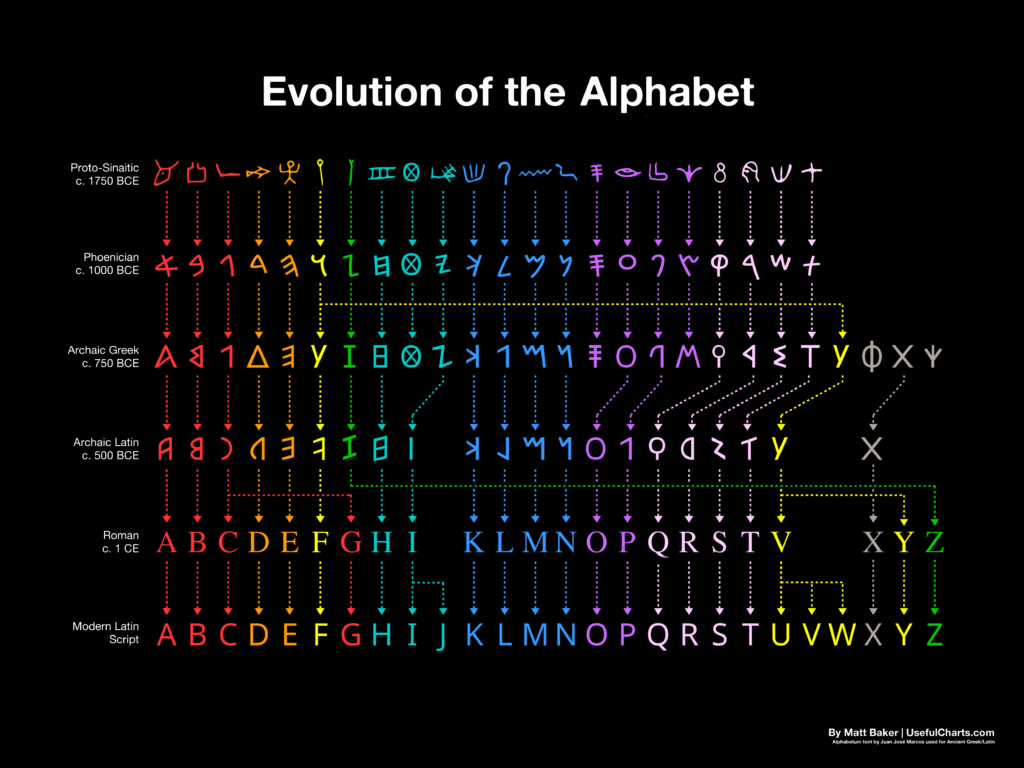Found this amazing chart on the history of the English (or Latin) alphabet, made by Matt Baker. You can download the hi-res color version here.

A few interesting tidbits I’ve recently learned about our alphabet, from the smart people on Reddit:
- The ampersand (&) used to be part of the alphabet, right at the end. It was pronounced like ‘x, y, z and per se and’ so is where we get ampersand from.
- Thorn (þ) isn’t on the chart anywhere either. It was part of the Old English alphabet and was pronounced like ‘th’, but because it looks like ‘y’, when the printing presses arrived in England from Europe, they didn’t have the þ symbol, so they used Y instead as it was close enough. When you see spellings like ‘Ye old Fish and Chip Shop’ in England, the ‘Ye’ is meant to be pronounced like ‘The‘.
- Aside from thorn, there were five other letters that have been dropped from the English alphabet: eth (ð), wynn (ƿ), yogh (ȝ), ash (æ) and ethel (œ)
- Pause – comes from παύω meaning ‘I stop’ or ‘I cease’
- Skeptic – stems from σκοπεω meaning ‘I examine’
- Psyche – ψυχή, means ‘soul’ – not ‘mind’ as we may assume!
- Angel – comes from αγγελος simply meaning ‘messenger’
- The letter “Z” was re-introduced into the Latin alphabet c. 1st century B.C. by the Romans in order to capture the Greek letter zeta. They did tack it back onto the end, which explain Z’s current position. This predates both the modern printing press and even the invention of moveable type by several centuries.
- The letter that looks like a Z in the Archaic Greek alphabet is the letter yod, which used to have a “y” sound but gradually morphed into an “i” sound (pronounced “ee”) and became the Latin I.
- Before the Romans it was not uncommon for writing to be done in “Boustrophedon” or “ox-turning” style, ie the first line went left-right, the second line right-left etc (like the path of an ox ploughing a field). Not only was the direction of the words reversed, but the letters were also flipped. It wasn’t so much that the Romans flipped them, they just settled on one of the two versions of each letter that were available.
- After Greeks adopted the phoenician letters they flipped them perhaps because phoenicians wrote from right to left and Greeks wrote from left to right. Of course there is also the weird “Boustrophedon” way that was only used for a few hundred years. The letters used in Classical Greece is shown here. As you see in this, it shows the letters in their new “correct” orientation that was used later on.
- “W” literally meant “double U”, or rather “double V” since at one time V and U were the same letter that diverged as pronunciations changed.
